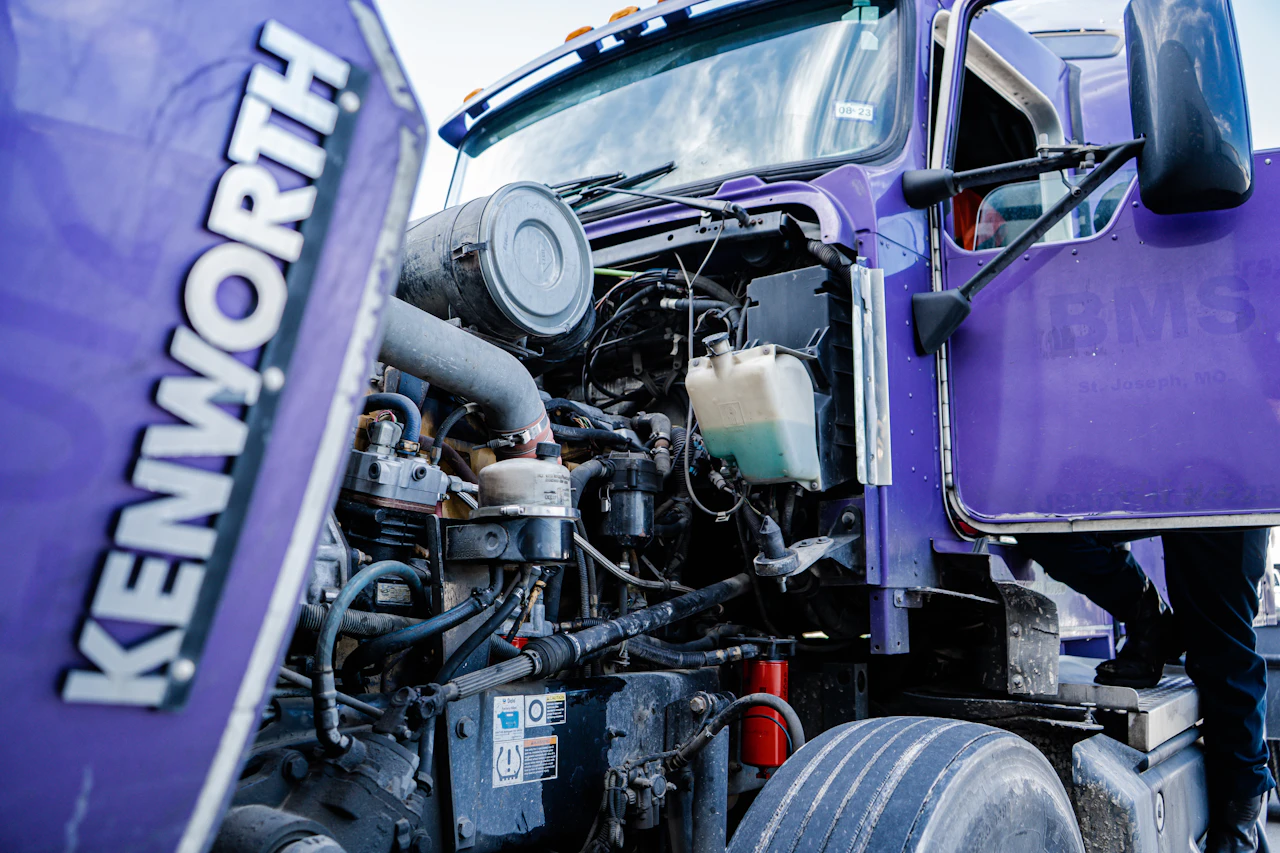The Kenworth C500 is built like a tank. It’s a truck designed for heavy, off-road hauling, logging, oilfield work, and other brutal jobs. But even the toughest, most rugged trucks like the C500 fall victim to electrical gremlins. And if we’re being completely honest, with all the tech packed into modern diesel trucks, electrical issues are becoming some of the most common breakdown causes on the road, and off it.
So, whether you're operating in the industrial zones of Florida or hauling heavy on muddy job sites, here’s what you need to know about C500 electrical failures, what causes them, and how to keep them from getting out of hand.
1. Battery and Ground Cable Corrosion
Corroded or loose battery terminals and ground cables are a big reason that trucks have starting issues, flickering lights, and weird electrical behavior. If you’re running a Kenworth C500, you might have noticed some of these issues.
Why It Happens:
- Batteries are often exposed to the elements
- Road salt (if your route takes you up the coast) speeds up corrosion
- Vibration from heavy-duty off-road use loosens terminals
Symptoms to Watch For:
Before you head out, or even while you're on the road, you will want to keep your eyes and ears open for:
- Slow cranking or no start
- Dim or flickering lights
- “Ghost” codes in the dash
Prevention Tip:
To avoid electrical problems with your truck's battery, be sure to clean and tighten the terminals. You’ll want to do this during every preventive maintenance cycle. And don’t forget to apply dielectric grease and check grounding straps for wear or rust.
2. Alternator and Charging System Failure
On a C500, the alternator takes a beating, especially when running extra lighting, HVAC systems, or winches. And we know what a failing alternator can mean: your rig stranded with a dead battery.
Why It Happens:
- Excessive electrical loads (common on utility rigs)
- Belt tension issues
- Contamination from oil or mud
Symptoms to Watch For:
Your alternator won’t fail without warning. If you notice the following, it’s time to get it checked.
- Warning light on the dash
- Batteries not charging
- Power loss in auxiliary systems (like PTO controls or cab fans)
Prevention Tip:
Be sure to test the alternator output regularly. And keep up with timely belt replacements and inspect pulleys for wear. If you're operating in mud or heavy dust, clean the alternator housing routinely.
3. Wiring Harness Chafing and Pinch Points
Kenworth C500s are beasts. They are known for rigid frames and custom body add-ons. But all that steel has a downside. It can lead to chafing of wiring harnesses, especially around the firewall, frame rails, and under the cab.
Why It Happens:
- Wires rubbing against sharp edges or moving parts
- Poor routing after equipment installation
- Off-road bouncing and stress points
Symptoms to Watch For:
- Intermittent system failures (engine sensors, ABS, lights)
- Shorts or blown fuses
- Trouble codes with no clear root cause
Prevention Tip:
During inspections, look for exposed or rubbed wires. Keep any loose harnesses secured with proper clips—not just zip ties—and cover sharp edges with loom or edge trim.
4. Faulty Cab Control Modules (CCMs)
The CCM (Cab Control Module) is the brain that controls a lot of your dash electronics, HVAC, lighting, and switches. When it goes haywire, the truck might still run, but the cab becomes a disco of warning lights and glitches.
Why It Happens:
- Moisture intrusion (think leaky seals or poor drainage)
- Voltage spikes from jump-starts or failing batteries
- Software bugs
Symptoms to Watch For:
- Random lights on the dash
- Non-functioning switches (headlights, fan, windows)
- HVAC or radio is turning off sporadically
Prevention Tip:
We get it, keeping things in the cab running as they should be is important.
Make sure the cab interior stays dry to prevent water damage. And use proper battery maintenance to avoid surges. If replacing a CCM, ensure it’s programmed correctly—some failures stem from improper installation.
5. Connector Failures and Water Intrusion
In a C500’s modular design, there are many connectors for lights, sensors, engine harnesses, and aftertreatment systems. These connectors are vulnerable to water intrusion, especially in wet or salty conditions.
Why It Happens:
- Cracked or missing seals
- Pressure washing under the chassis or hood
- Poorly sealed aftermarket add-ons
Symptoms to Watch For:
- Sensor faults (especially NOx, DEF, or ABS)
- Flickering LED lighting
- Sudden system dropouts
Prevention Tip:
Two words: dielectric grease. Use it on all exposed connectors. And if you’re running aftermarket equipment, make sure it’s sealed to OEM standards. Check connector boots and replace cracked ones before winter hits.
Bonus: ECM Electrical Problems
Now this isn’t something that happens often, but ECM (Engine Control Module) failures do happen. However, it’s usually because of voltage issues or corrosion in the harness. A bad ECM can cripple your C500 in the middle of a job.
Avoid by:
- Never jump-start without surge protection
- Keeping wiring secure and dry
- Monitoring battery health—low voltage kills modules
Keeping The Gremlins Away
The Kenworth C500 is designed for some of the harshest jobs out there, but its electrical system still needs regular care. From ground cable corrosion to wiring harness rub-throughs, most issues start small but escalate fast if ignored.
If you think your C500’s electrical system needs attention, schedule a full electrical inspection with Suncoast Fleet Services in Florida. We’ll keep your wiring clean, your systems powered, and your truck working where it belongs, on the job.

.svg)
.svg)
.svg)